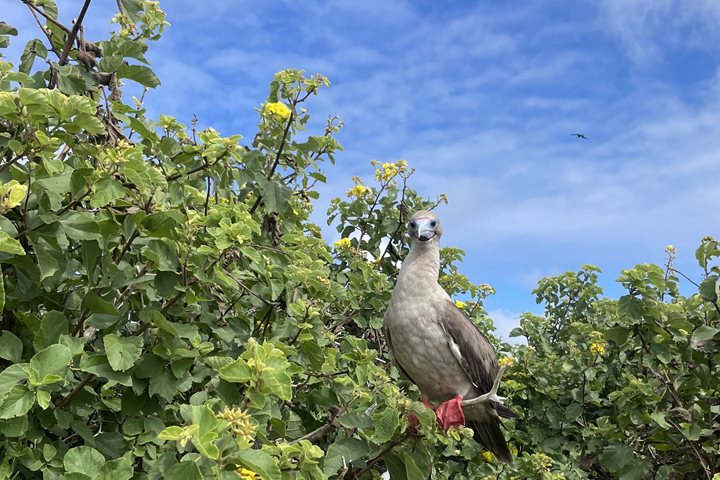Genovesa Island is in the Northern hemisphere and very isolated from the rest of the archipelago. This isolation has led to very interesting conditions, such as the absence of terrestrial reptiles, which were never able to colonize this Island. The prickly pear cactus has lost the sharpness of its spines. The top predator is the short-eared owl, which has adapted to hunting during the daily hours. The only marine reptile are the marine iguanas which, by the way, are the smallest of their kind in Galapagos.
5/29/2025
Read
National Geographic Gemini
Genovesa Island
Genovesa is considered one of the Galapagos crown jewels, and today it was showing off all of its splendor. Immediately after breakfast we put on our sturdy shoes and set out to explore Prince Philip’s Steps. This area is known for opportunities to observe not only large colonies of nesting Nazca and red-footed boobies, but maybe, just maybe, the short-eared owl which exhibits diurnal behavior on this island. After this walk we got ready for a dip in the Pacific Ocean and snorkeling along the inner coast of this caldera. The afternoon was equally amazing as we disembarked to explore Darwin Bay, along a short and easy trail that was packed with wildlife. Here we observed not only nesting frigatebirds, red-footed boobies, and Nazca boobies, but also a few yellow-crowned night herons. It was another incredible afternoon in the Galapagos Islands.







